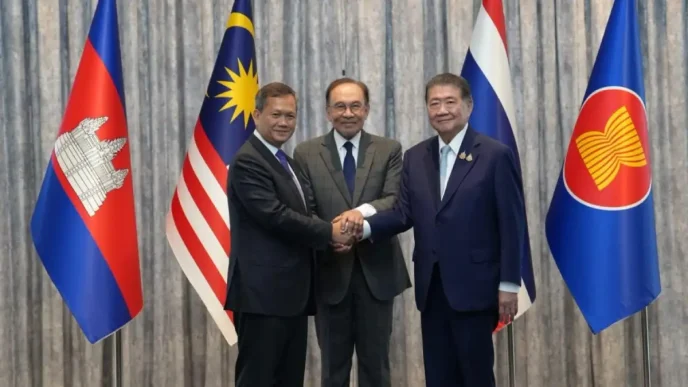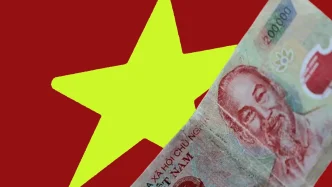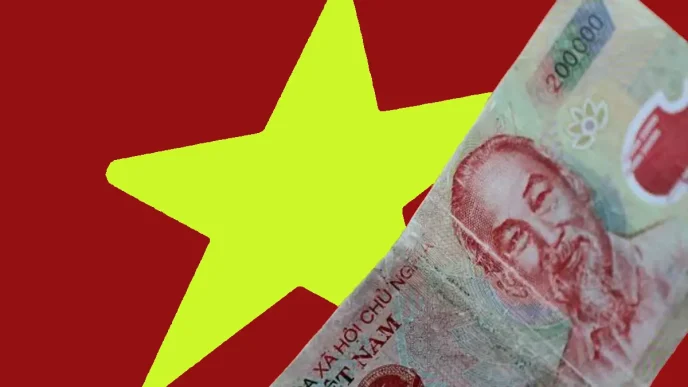Vietnam’s National Assembly has ignited a fierce debate with a series of proposed constitutional amendments aimed at reshaping the balance of power and modernising governance. Unveiled on 27 February 2025, the reforms seek to address long-standing issues of bureaucratic inefficiency and economic stagnation, while raising questions about political transparency and the role of the Communist Party of Vietnam (CPV). As the nation grapples with these changes, the stakes are high for both domestic stability and Vietnam’s image on the global stage.
A Push for Modernisation Amidst Economic Challenges
The proposed amendments, presented during a special session of the National Assembly, focus on decentralising authority to local governments, streamlining economic regulations, and enhancing judicial independence. According to state media outlet Vietnam News, Assembly Chair Tran Thanh Man stated, “These reforms are essential to meet the demands of a rapidly changing world” (Vietnam News, 27 February 2025). The government argues that empowering provincial leaders could accelerate infrastructure projects and attract foreign investment, critical for an economy still recovering from post-pandemic slowdowns.
Yet, the economic rationale is not without contention. Analysts suggest that while decentralisation may boost efficiency, it could also exacerbate regional disparities if wealthier provinces like Ho Chi Minh City gain disproportionate benefits over rural areas such as those in the Mekong Delta. If confirmed, such outcomes might widen social inequalities—an issue the CPV has historically pledged to address. However, no concrete evidence yet supports claims of inevitable disparity, and the government has promised mechanisms to ensure equitable growth.
Shifting Power Dynamics and the CPV’s Role
At the heart of the debate lies a more sensitive issue: the potential erosion of centralised control by the CPV. The amendments propose term limits for key positions and greater oversight of party officials by independent bodies—a move some see as a nod to international calls for transparency. While the CPV remains the sole political authority under Vietnam’s constitution, these changes could, if implemented, signal a subtle shift towards accountability.
Public sentiment, as reflected in posts on X, reveals a mix of optimism and scepticism. Some users praise the reforms as a step towards modernity, while others question whether they will genuinely challenge the CPV’s dominance or merely serve as cosmetic adjustments. One post from a Hanoi-based user read, “Term limits sound good, but will they apply to the top leaders? I doubt it.” Such doubts underscore a broader concern: without robust enforcement, reforms may remain symbolic.
Speculation about political motives behind the amendments abounds. If the CPV intends to placate international critics while maintaining control, as some analysts suggest, the reforms could be a calculated balancing act. Yet, no evidence confirms this intent, and adverse inferences about hidden agendas must be avoided until further clarity emerges from official statements or policy outcomes.
Judicial Independence: A Double-Edged Sword?
Another cornerstone of the reforms is the push for judicial independence, a concept long debated in Vietnam’s legal circles. Currently, courts operate under significant influence from the CPV and state apparatus, often prioritising political directives over legal impartiality. The proposed changes aim to insulate judges from external pressures, a move that could enhance Vietnam’s credibility in international trade and human rights discussions.
However, this raises practical concerns. Legal scholars warn that an abrupt shift towards independence, without adequate training or institutional safeguards, may lead to inconsistent rulings or judicial overreach. “If reforms are rushed, we risk creating a system neither the state nor the public trusts,” noted a Hanoi-based academic in a recent interview with Reuters. While the potential benefits are clear, the path to achieving them remains uncertain, and outcomes will depend heavily on implementation—a factor yet to be detailed by the National Assembly.
Public Reaction and Regional Context
For many Vietnamese citizens, the reforms are less about abstract principles and more about tangible impacts. In Hanoi’s bustling streets, opinions vary. Street vendor Nguyen Thi Lan, 42, told this correspondent, “I just want to know if these changes will make it easier to run my business without so many permits.” Her sentiment reflects a broader desire for practical outcomes over political rhetoric, especially among small business owners who have long struggled with red tape.
Regionally, Vietnam’s reforms are being watched closely. Neighbouring Laos and Cambodia, both with similar one-party systems, may view Hanoi’s moves as a potential model—or a cautionary tale. Meanwhile, Thailand, with its own history of constitutional flux, offers a contrasting perspective on the challenges of balancing reform with stability. Vietnam’s leadership will likely weigh these regional dynamics as it navigates domestic pushback and international scrutiny.
Historical Context: Learning from the Past
Vietnam’s constitutional history provides critical context for understanding the current debate. The 2013 amendments, for instance, reaffirmed the CPV’s leading role while introducing minor economic liberalisations. Those changes were met with cautious approval but ultimately failed to address deeper structural issues, such as corruption and inefficiency. Today’s proposals are more ambitious, yet they face similar hurdles: public trust remains fragile, and the CPV must convince sceptics that reform is genuine rather than performative.
The Vietnam Fatherland Front, a political coalition aligned with the CPV, has been tasked with gathering public feedback on the amendments. Its role as a mediator between state and society will be crucial in shaping perceptions, particularly in rural areas where access to information is limited. Ensuring that diverse voices—ethnic minorities in the Central Highlands, urban youth in Ho Chi Minh City—are heard will test the government’s commitment to inclusivity.
Looking Ahead: Risks and Opportunities
As the National Assembly prepares for a final vote later this year, the path forward is fraught with uncertainty. If the reforms succeed in streamlining governance and fostering economic growth, Vietnam could solidify its position as a regional powerhouse. Conversely, if they falter—through poor implementation or resistance from entrenched interests—the backlash could undermine public confidence and stall progress.
Speculative claims about economic impacts, such as projected GDP growth of 7% by 2030 if reforms are enacted, must be treated with caution. While state media has floated such figures, independent verification is lacking, and no evidence confirms their accuracy. Conditional analysis suggests that if decentralisation reduces bureaucratic delays, foreign direct investment could indeed rise—but this remains a hypothesis, not a certainty.
Internationally, the reforms may influence Vietnam’s standing with partners like the European Union, which has pressed for governance improvements as part of trade agreements. A more transparent and efficient system could bolster Hanoi’s negotiating power, though any missteps risk reinforcing perceptions of systemic opacity.
Conclusion: A Nation at a Crossroads
Vietnam’s proposed constitutional amendments represent a pivotal moment for the country’s political and economic future. Balancing the CPV’s authority with calls for accountability, streamlining governance while avoiding inequality, and modernising without destabilising—these are no small tasks. As debates unfold in the National Assembly and on the streets of Hanoi, one thing is clear: the outcomes of these reforms will resonate far beyond Vietnam’s borders.
For now, the nation watches and waits. The promise of progress is tangible, but so are the risks of disappointment. Only time will reveal whether this chapter in Vietnam’s history marks a genuine turning point or another missed opportunity.














